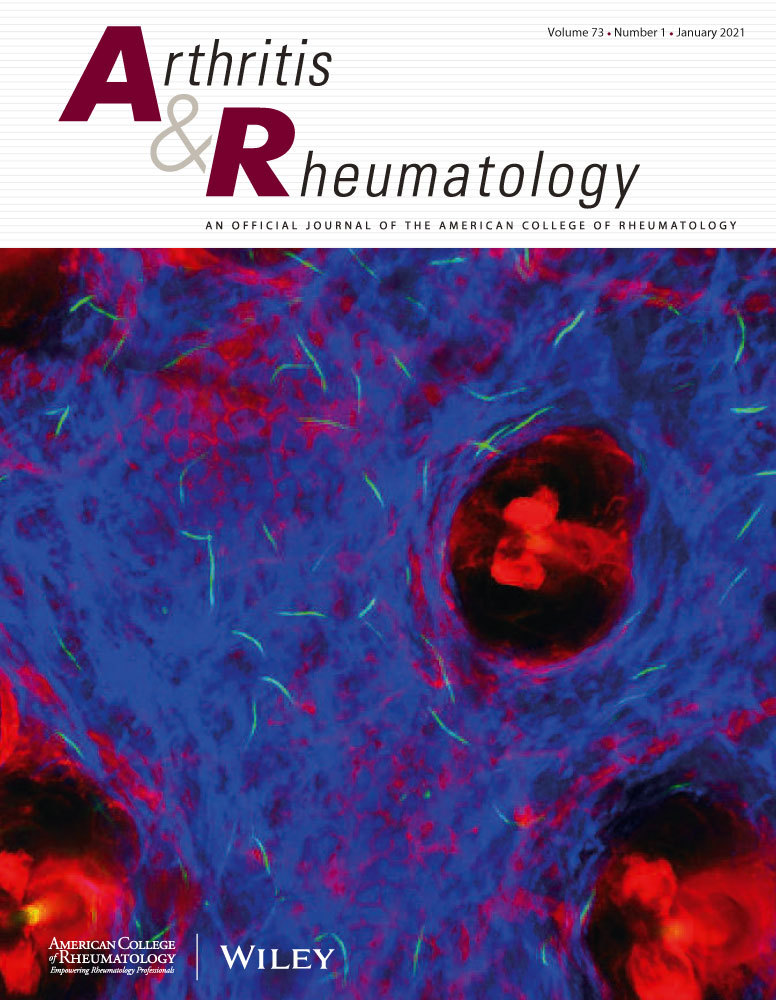GDF5形状关节形态和骨关节炎疾病风险的复杂调控相互作用
IF 11.4
1区 医学
Q1 RHEUMATOLOGY
引用次数: 0
摘要
目的通过靶向GDF5的调控相互作用揭示骨关节炎(OA)疾病生物学的因果水平。方法通过研究不同的GDF5调控区(R2、R3‐5、R7‐R9、R18‐20、GROW1),探讨它们在体内外对基因表达和关节形态的功能影响。此外,我们在体外和体内小鼠模型中模拟了上述增强子中的OA变异,以研究其表达和疾病效应。结果对于所有的调控区域,我们发现了激活/抑制的证据,这些区域之间或内部影响了联合特异性表达的模式。例如:(1)R4增强子虽然被认为是激活的,但在邻近组织和部位具有抑制表达的双重作用;(2) GROW1调控区的生长板特异性表达模式受到相邻序列的限制,将其表达限制在软骨膜中。接下来,我们针对体内的不同区域/变体。检测R2de区导致Gdf5表达降低~40%,关节形态改变,但OA风险未增加;同样,在小鼠中建模最常被引用的OA风险(rs143384)变异对表达、关节形态或疾病没有影响。然而,我们确定了这种rs143384风险变异与下游疾病风险变异之间的上位性相互作用,这些变异位于受抑制的调控区域内,该化合物影响表达。结论:在迄今为止对OA基因座进行的最佳研究中,这些发现为了解基因调控相互作用和局部上位性如何在OA疾病风险的病因学中起作用提供了经验教训,并且对高GWAS意义的个体变异的评估不需要单独考虑因果关系。本文章由计算机程序翻译,如有差异,请以英文原文为准。
Complex regulatory interactions at GDF5 shape joint morphology and osteoarthritis disease risk
ObjectivesTo reveal causal level osteoarthritis (OA) disease biology by targeting regulatory interactions at GDF5. MethodsBy investigating different GDF5 regulatory regions (R2, R3‐5, R7‐R9, R18‐20, GROW1) we explored their functional impacts on gene expression and joint morphology in vivo and in vitro . We additionally modeled OA variants in said enhancers in vitro and in vivo mouse models for expression and disease effects.ResultsFor all regulatory regions we found evidence of activation/repression between or within said regions that impacted patterns of joint‐specific expression. Examples are: (1) the R4 enhancer, whilst considered to be activating, has dual roles repressing expression in adjacent tissues and sites; and (2) Growth plate‐specific expression patterns by the GROW1 regulatory region are confined by adjacent sequences to restrict its expression to the perichondrium. We next targeted different regions/variants in vivo. Testing the R2de region resulted in ~40% reduction in Gdf5 expression, joint morphology changes, but no increase in OA risk; likewise, modeling the most cited OA risk (rs143384) variant in mice had no impact on expression, joint morphology, or disease. However, we identified epistatic interactions between this rs143384 risk variant and downstream disease risk variants lying within regulatory regions subject to repression, that compound to impact expression.ConclusionsThese findings, at the best studied OA locus to date, serve as lessons on the nature of how gene regulatory interactions and local epistasis work in the etiology of OA disease risk, and that assessment of individual variants of high GWAS significance need not alone be considered causal.
求助全文
通过发布文献求助,成功后即可免费获取论文全文。
去求助
来源期刊

Arthritis & Rheumatology
RHEUMATOLOGY-
CiteScore
20.90
自引率
3.00%
发文量
371
期刊介绍:
Arthritis & Rheumatology is the official journal of the American College of Rheumatology and focuses on the natural history, pathophysiology, treatment, and outcome of rheumatic diseases. It is a peer-reviewed publication that aims to provide the highest quality basic and clinical research in this field. The journal covers a wide range of investigative areas and also includes review articles, editorials, and educational material for researchers and clinicians. Being recognized as a leading research journal in rheumatology, Arthritis & Rheumatology serves the global community of rheumatology investigators and clinicians.
 求助内容:
求助内容: 应助结果提醒方式:
应助结果提醒方式:


